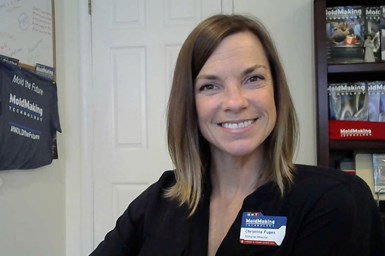How to Make the Right Change for the Better
Appears in Print as: 'Stuck in the Middle?'
Implementing change is not about just adding people or technology—it’s about being productive and effective.
#basics #FAQ #editorial
There are three types of prospects Dr. Lisa Lang of The Science of Business encounters in this month’s article, “A Different Approach to Pricing”:
- Those who are losing money. If something doesn’t change, they’re not going to be around. They struggle to be on time, to get jobs through the shop and have tons of chaos.
- Those who want to keep doing better. They are at 90% due date performance and they want to reach 100%.
- Those who are in the middle. They are satisfied with where they are and do not possess curiosity or a hunger to achieve more.
Which group are you? Let me rephrase that… what group do you want to be? I hope you say No. 2.
Featured Content
To become like those described in No. 2 will take a large amount of change. However, the change Dr. Lisa recommends—although counter-intuitive—is much simpler than what most shops are currently doing. She is introducing what she likes to call a “pattern interrupt.”
To start, ask yourself the following questions:
- What is your goal?
- What is your biggest challenge?
- Do you need new business?
- Do you need to hire someone?
- Do you need new technology?
- Do you need more sales?
Then, ask yourself, “How do you know which area to focus on to make the necessary improvements?” Well, MMT is here to help you assess the answers to these questions and start you down the road of change.

I reconnected with Dr. Lisa after reading some of her recent social media posts and revisiting a few of the articles she wrote for MMT 10 years ago on the Theory of Constraints and Velocity Scheduling. We decided an article series presenting her pattern interrupt, or four-stage approach to change, is long overdue.
Dr. Lisa is a Theory of Constraints (TOC) expert and is known for applying TOC to job shop scheduling, pricing/quoting and marketing. She is all about making custom job shops and machine shops (mold builders) more productive and more competitive.
One industry trend that makes this conversation so timely is the merger and acquisition activity over the past few years. If a mold builder is interested in selling their business in the next few years, then they need to prepare to sell. “For example, if you’re going to get a percent of your EBITDA, get that EBITDA up. If you increase EBITDA, you become a very attractive company. It doesn’t take long with our techniques. It’s simple and fast. We’ve taken a lot of mold builders and gotten them to a 10% or more return on sales. That gets the ‘middle’s’ attention,” Dr. Lisa says.
Current supply chain issues and inflation prompted Dr. Lisa and me to start with a look at pricing and quoting, described in more detail in the April issue. This will be followed by marketing/workforce development and technology investment and deployment. Then, we’ll wrap up the series with an article that shares a strategy for identifying which of the three areas to change first.
RELATED CONTENT
-
7 Key Advantages of Hot Runner Systems
While both hot runner and cold runner systems have their benefits, for design flexibility as well as reduced cycle times and costs, hot runner systems will probably be the better choice.
-
Plastic Prototypes Using Silicone Rubber Molds
How-to, step-by-step instructions that take you from making the master pattern to making the mold and casting the plastic parts.
-
How to Choose the Right Tool Coating for Your Machining Application
Selection criteria and common coating attributes for PVD, CVD and other common coatings.













